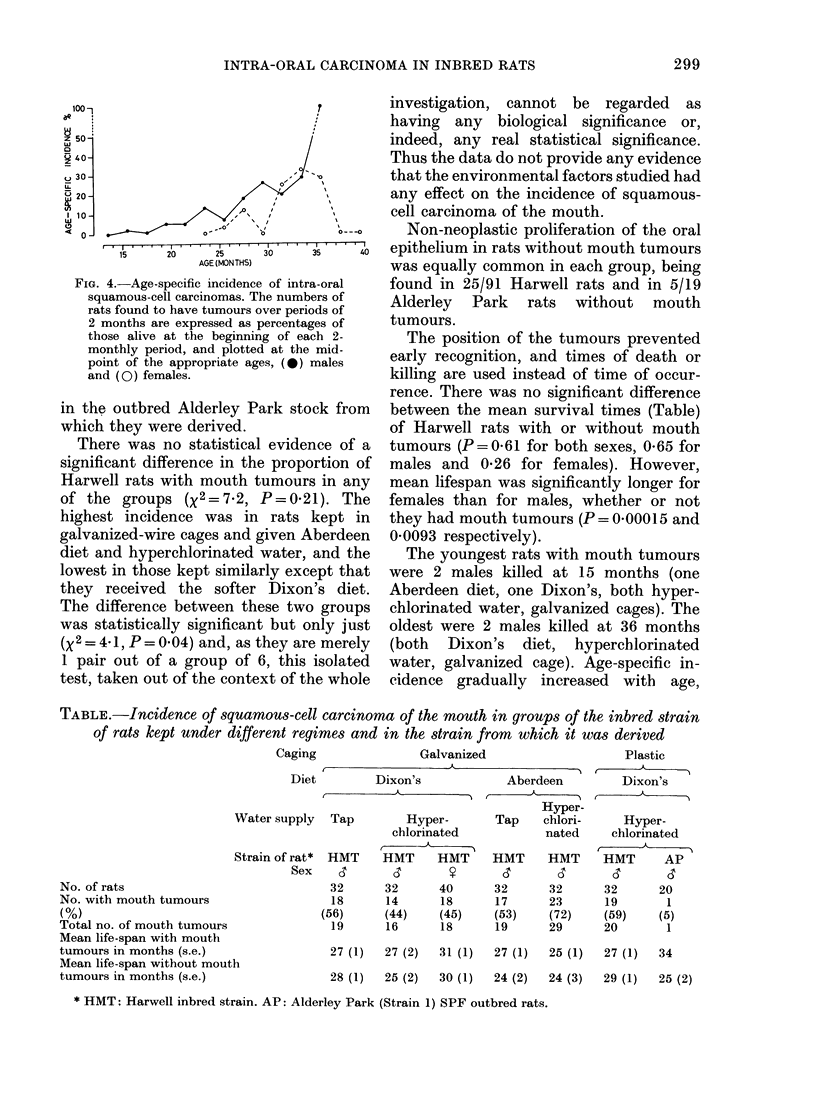Abstract
Intra-oral squamous-cell carcinomas occurred in over 50% of the HMT inbred strain of rats. In the outbred stock from which it was derived the incidence was 5% or less, both when inbreeding was begun and after the inbred strain was fully established. Various factors in food and husbandry which might have irritated the oral mucosa were investigated, but there was no signficiant evidence that they played any part in the high incidence of mouth tumours. It is concluded that there must have been an accidental selection during inbreeding in favour of rats which had an inherited tendency to develop squamous-cell carcinoma of the mouth. There are a number of similarities between the rat tumour and intra-oral squamous-cell carcinoma in man and it is suggested that the rat tumour could be used as a model of the human disease.
Full text
PDF






Images in this article
Selected References
These references are in PubMed. This may not be the complete list of references from this article.
- Binnie W. H. Epidemiology and etiology of oral cancer in Britain. Proc R Soc Med. 1976 Oct;69(10):737–740. doi: 10.1177/003591577606901005. [DOI] [PMC free article] [PubMed] [Google Scholar]
- Graffi A., Bender E., Schramm T., Graffi I., Bierwolf D. Studies on the hamster papilloma and the hamster virus lymphoma. Bibl Haematol. 1970;(36):293–303. doi: 10.1159/000391720. [DOI] [PubMed] [Google Scholar]
- HOLLANDER C. F., van RIJSSEL T. Experimental production of intramandibular carcinoma in mice by mechanical damage. J Natl Cancer Inst. 1963 Feb;30:337–359. [PubMed] [Google Scholar]
- Hulse E. V. Can radiation induce interstitial-cell (Leydig-cell) tumours of the testis? Int J Radiat Biol Relat Stud Phys Chem Med. 1977 Aug;32(2):185–190. doi: 10.1080/09553007714550871. [DOI] [PubMed] [Google Scholar]
- SASSEN A., MATTELIN G., KENNES F., MAISIN J. R. Effect of chlorination of drinking water on mortality after wholebody x-irradiation. Nature. 1963 Jun 29;198:1318–1318. doi: 10.1038/1981318a0. [DOI] [PubMed] [Google Scholar]





